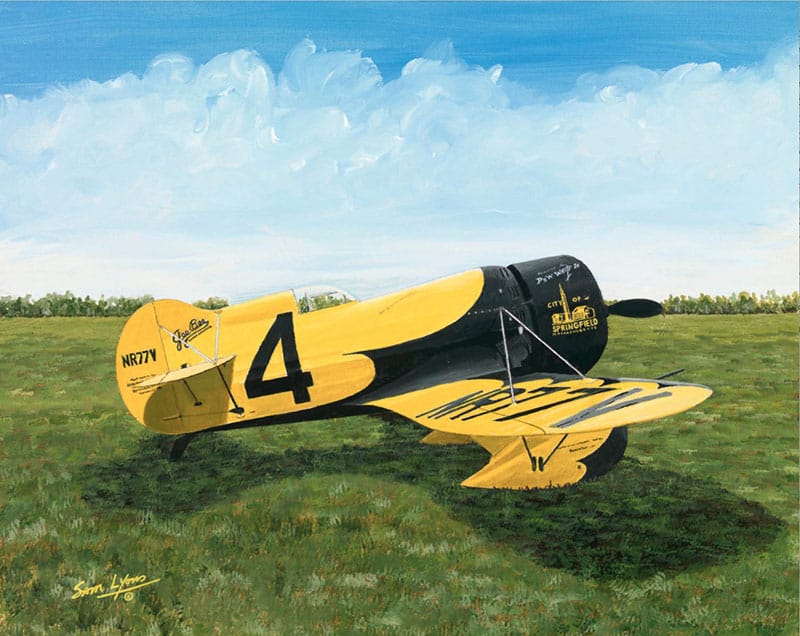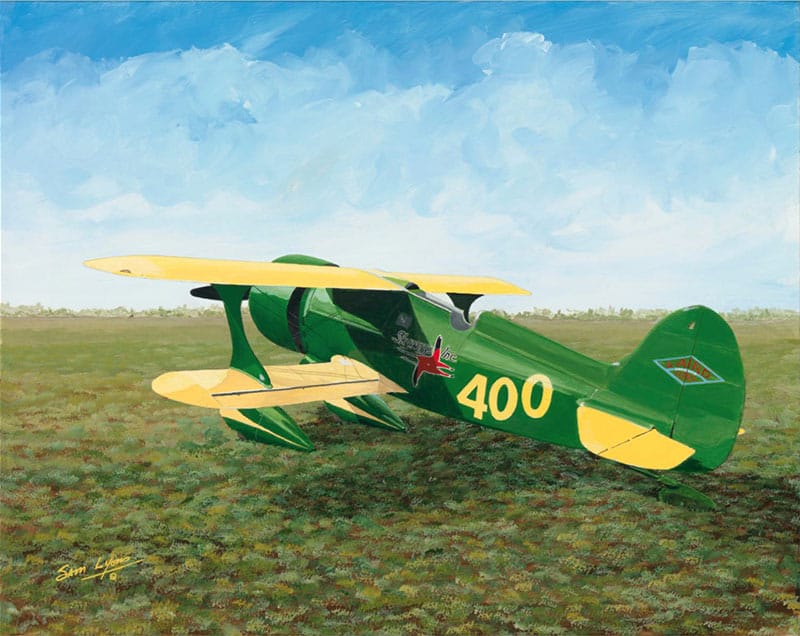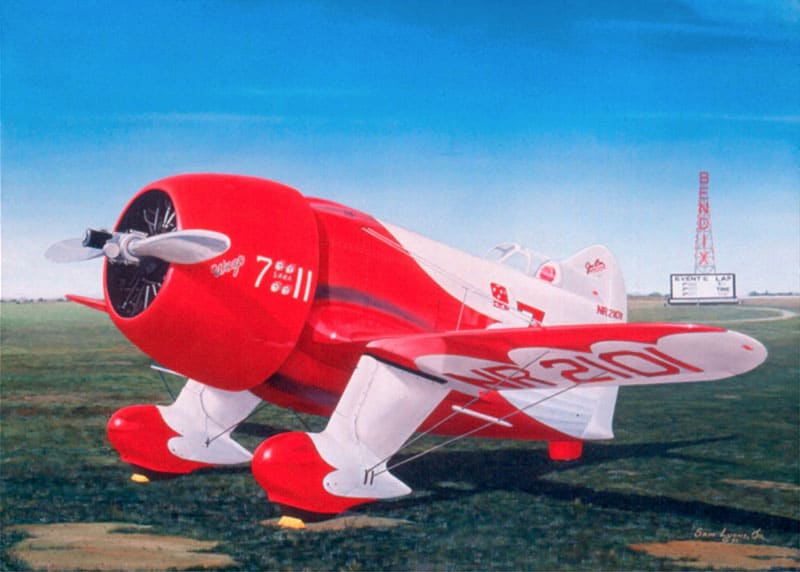Description
About the Print
Sam unveiled a series of four Air Racers at SUN ‘n FUN 2013. This yellow and black Gee Bee Z was the last in the series. On August 22, 1931, the Model Z was rolled out of its hangar. Measuring only 15-ft. 1-inch, it was shorter and stubbier than previous Gee Bees.
History of the Gee Bee Z
During the Great Depression, the Granville Brothers decided in July 1931 to build an aircraft. This aircraft was to compete in that fall’s Thompson Trophy competition at the National Air Races in Cleveland, Ohio. They hoped that a victory in the race would lead to additional orders for their line of sporting aircraft.
It was constructed in less than five weeks at a cost of under $5,000 USD. The Gee Bee (for “Granville Brothers”) Model Z, was a small, tubby airplane. It was essentially the smallest possible airframe constructed around the most powerful available engine. The engine was a supercharged Pratt & Whitney R-985 radial engine, producing 535 horsepower.
First Flight
First flying on August 22, 1931, the Gee Bee Z quickly proved to be tricky to fly. However, it fulfilled every expectation with regards to speed. Flown by pilot Lowell Bayles, the Gee Bee Z attained the speed of 267.342 miles per hour at the National Air Races during the Shell Speed Dash. It qualified on September 1, then went on to win the Goodyear Trophy race. This race was run over a course of 50 miles (80 km), the next day at an average speed of 205 miles per hour (330 km/h). On September 5, the aircraft’s engineer, Bob Hall, flew the Gee Bee Z to victory in the General Tire and Rubber Trophy race. Then he won again the next day in a free-for-all event.
In the Thompson Trophy Race on September 7, Bayles was triumphant, winning with an average speed of 236.24 miles per hour. He won over competitors including Jimmy Doolittle, James “Jimmy” Wedell, Ben Howard, Dale Jackson, Bill Ong, Ira Eaker, and Hall, who finished fourth in a Gee Bee Model Y.
Fatal Crash
Following the Thompson Trophy race, the Gee Bee Z was re-engined with a larger, 750-horsepower (560 kW) Wasp Senior radial. The goal was an attempt at establishing a world speed record for landplanes at Wayne County Airport in Detroit, Michigan. Unofficially clocked at 314 miles per hour (505 km/h) on a trial run, it surpassed the previous record of 278 miles per hour. It surpasses the previous record by attaining 281.75 miles per hour on December 1, 1931, but the margin was too small for the record to be officially registered. A further record attempt on December 5, 1931, would end in tragedy. The aircraft suffered a wing failure and rolled into the ground, killing pilot Bayles.
Prints
The 16” x 20” prints are available in a Limited Edition of 100 Signed & Numbered prints and 10 Artist Proofs.
Original Painting For Sale
NOTE: The original acrylic painting is also for sale for $4,500. Call Lyons Studio (863 644 5010) to request a photo of the framed original.




Reviews
There are no reviews yet.